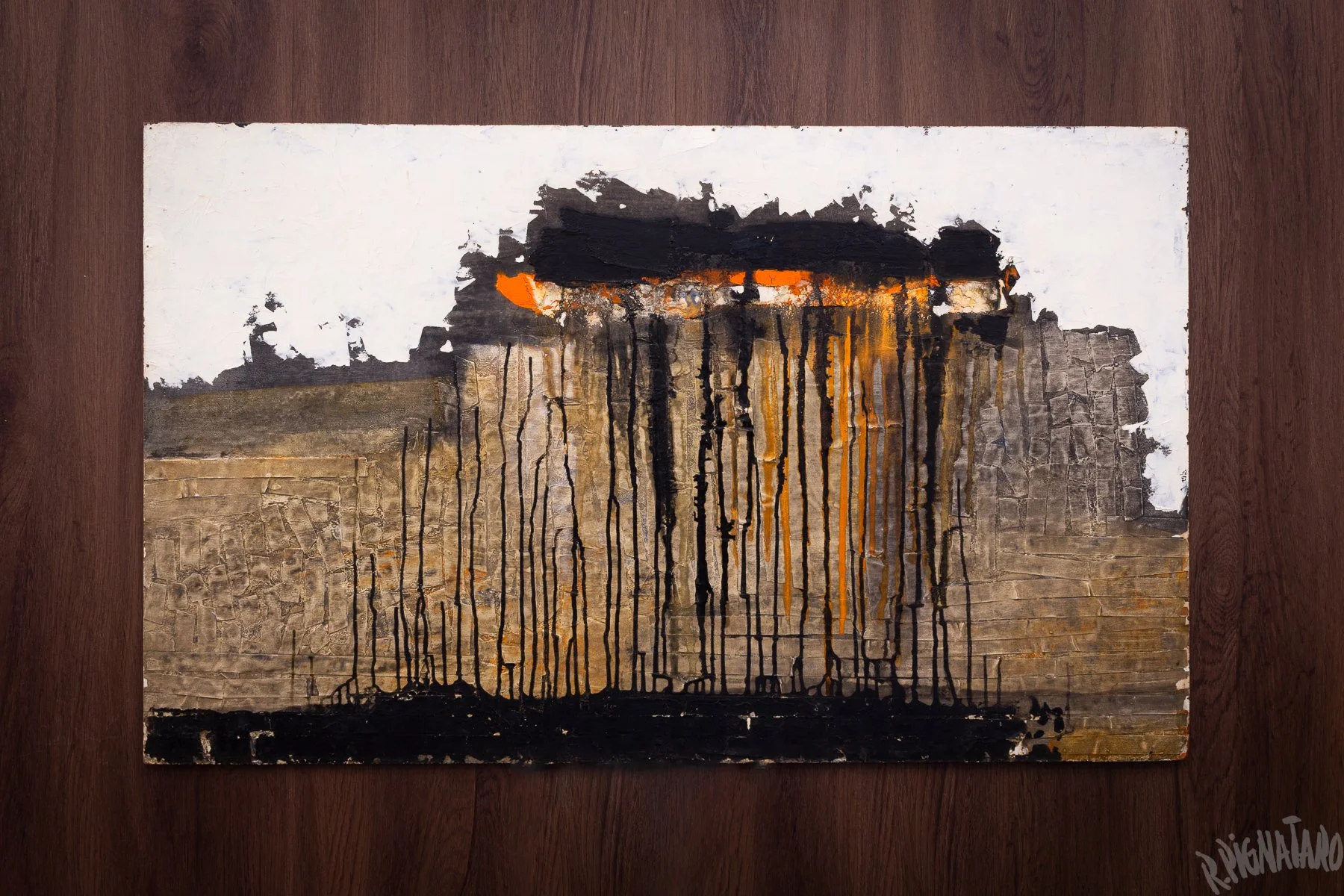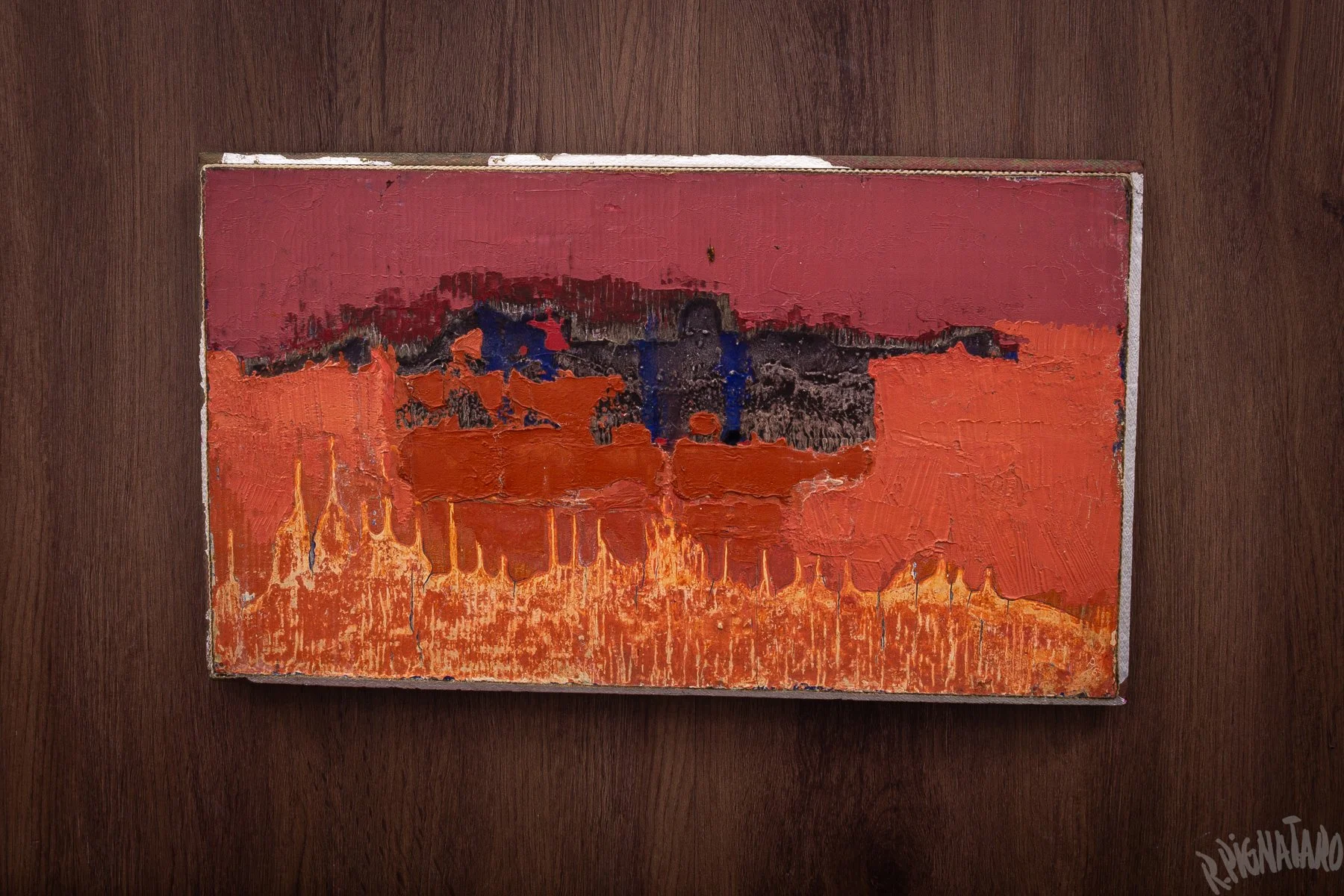This article revisits a violent episode in Argentine history—the 1955 bombing of Plaza de Mayo—and explores whether echoes of that trauma, however obliquely, might be reflected in a series of abstract works Roberto Pignataro exhibited eight years later.
•••
On June 16th, 1955, thirty rebel aircraft from the Argentine Navy and Air Force appeared unexpectedly over the city of Buenos Aires. In what turned out to be an attempt to overthrow then-president Juan D. Perón, the rebels targeted the heart of the city, Plaza de Mayo, along with nearby government buildings, employing a combination of bombs and strafing runs.
While loyal forces managed to quell the revolt in just a few hours, the attack caused unprecedented death and destruction, killing over 300 civilians and wounding 800 more.
At the time these events unfolded, my father Roberto Pignataro and his brother Francisco were both working at the Argentine Central Bank, roughly two blocks north of Plaza de Mayo. Like tens of thousands of other civilians that day, they suddenly found themselves trapped in a war zone, right at the heart of downtown Buenos Aires.
The Central Bank building swiftly went into lockdown to protect its staff. Initially believed to be a temporary measure, the lockdown extended into the night, lasting even hours after the attacks had been subdued.
When the staff was finally released, many made their way back toward Plaza de Mayo—a vital transportation hub—only to be met by the horrifying aftermath. The area was still in shambles and without power, forcing the still shell-shocked commuters to navigate their way home on foot, including the Pignataro brothers.
While this story has always been known in our family, it wasn’t until recently that I saw actual footage of the bombings. It has made it hard not to connect dots between the political violence of this era and some of the intense expressionism Roberto Pignataro produced in the early 1960s.
There is a particular exhibition Pignataro held at Galería J. Peuser in July of 1963, where the artwork evokes intense scenes of destruction. With an understanding of how subjective abstract art interpretations can be, I tend to see a direct connection between this collection and his personal experience during the 1955 bombings.
In the end, the beauty of abstract art is that its meaning is not bound to anyone’s interpretation; you may have a completely different take on these paintings and what they represent and you wouldn’t be wrong.
•••
A Quick Afterthought
When it comes to abstraction, I would never commit to a singular interpretation, as doing so would undermine the very essence of what abstraction represents. However, just for the sake of argument, let’s entertain the premise that Pignataro’s July 1963 show may be in fact a visual commentary on political violence. One might then rightly wonder whether his work was influenced by more recent events.
Those familiar with Argentine history will know 1955 was not the last time the Argentine military bombed its own, the “1963 Argentine Navy Revolt” was another incident involving aircraft and destruction that caused great shock to Argentine society. In terms of international affairs, the Vietnam War and the Cold War were also weighing on every Argentine’s mind.
While I have no doubt Pignataro lived 1960s political violence intensely, both local and international, he was not affected by it at such personal level like he was in 1955. Any of these more recent events could have been triggers of horrendous memories indeed, even timely targets for his commentary, but in my opinion they lacked the element of personal experience to have been genuine sources of inspiration for this show.
Slideshows
(Top) 1955 Aerial attacks on Plaza the Mayo.
(Bottom) Artwork from Roberto Pignataro’s July 1963 Exhibition at Galería J. Peuser.
Further References:
The Bombing of Plaza de Mayo (Wikipedia)
The “1963 Argentine Navy Revolt” (Wikipedia)
Roberto Pignataro’s July 1963 Exhibition at Libreria J. Peuser




































